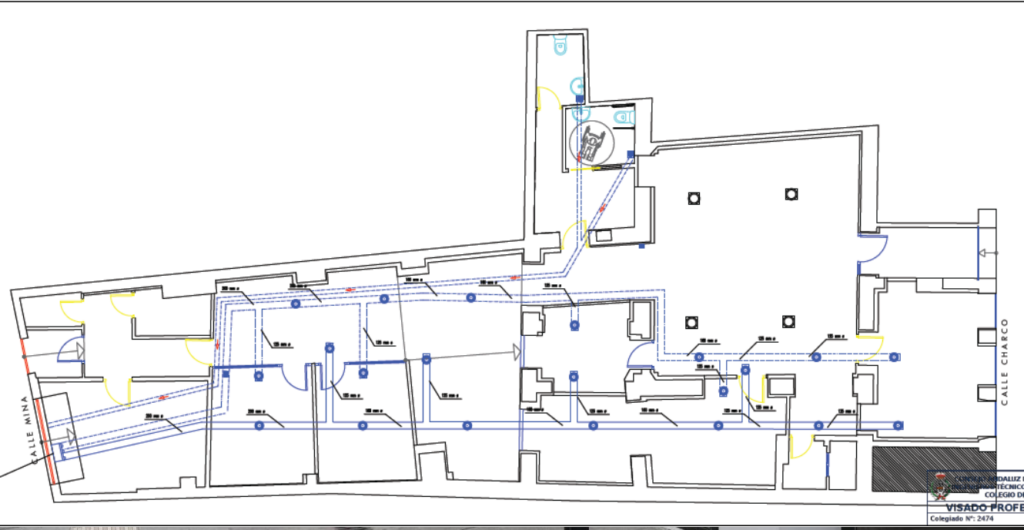Spanish pilot -ROTA
Description
The research activities will be carried out in a low-rise office building. The pilot building is the headquarter of MODUS (Movilidad y Desarrollo Urbano Sostenible, S.L.), a public company owned by Rota municipality that is in charge of the management of the urban infrastructures of the city (lighting, city sanitation systems, and mobility). The building was constructed in the. year 1966 being retrofitted in the year 2020. Currently it is used as administrative offices being its capacity less than 50 people.
The climatology in Rota is characterized by hot, arid and humid summers without relevant rainfalls and cold, wet and partly cloudy winters. During the course of the year, the temperature varies from 8ºC to 29ºC, reaching an average of 26ºC in the summer and 17ºC in winter. These temperatures hardly ever descend to less than 3ºC or rise to more than 34ºC.
In Spain, and more specifically in Rota, the impact of the sun on this building is largely reflected in the room where the glass absorbs a large part of the sun’s rays and generates a rise in temperature inside. Although the roof receives solar gain, it is prepared not to let as much heat pass through as the glass.


This pilot will be focused on the optimization of the HVAC systems being this the working hypothesis of this pilot. Weather forecast, indoor and outdoor temperature will be used for calculating the future cooling demand (which is more relevant in terms of energy demand in comparison to the heating demand which that is only present during winter season). Apart from the energy saving by forecasting weather changes, the forecasted CO2 amount in the power grid will help to investigate thermal activation options (e.g. pre-cooling the building in case of low CO2 in the grid)
Recommendations will be done to the building managers in order to adjust the climatization system in order to have a more efficient performance.
The model predictive control will allow to activate/deactivate accordingly to weather prognosis enabling savings produced by the pre-cooling/pre-heating actions. In this sense, the predictive model will also allow to activate/deactivate air conditioning systems accordingly to their energy consumption. It is foreseen to achieve a relevant reduction of CO2 emissions per kWh based in an optimized management of the heating/cooling systems applying pre-cooling/pre-heating in the building accordingly the weather prognosis.